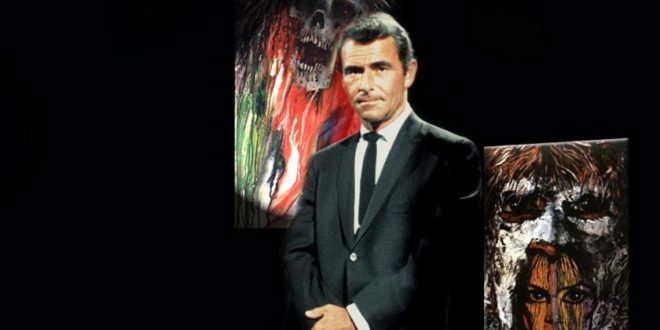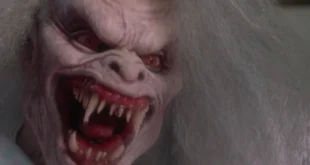There hasn’t been anyone like Rod Serling, who passed away in 1975. He was a visionary maverick who bent the ear of the network, and they in turn bent a knee to him regarding the brilliantly progressive yet timeless television he gave them, offering them science fiction and horror laced with social commentary that peppered the story with a subtle spice that got everyone thinking deeper thoughts… whether they wanted to or not. His style is the model of how to effectively use the television and film mediums to provoke thought about social change. We’ve lost that lately with political agenda at the forefront of recent creation, with the series or the film as just a substrate to hold it up. I’m hoping someone picks up the mantle again that he left us. It’s a big void to fill.
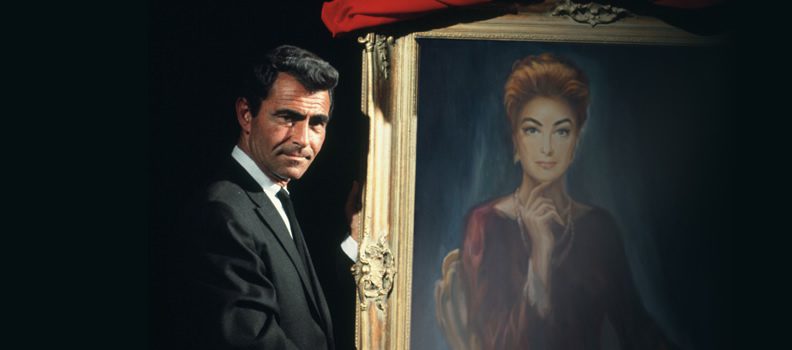
His best known series was, of course, The Twilight Zone. Rightfully so. It is a masterwork of Eisenhower Cold War paranoia of the early ’60s, packaged in the suit and tie respectability of the era, but with an underlying and irresistible twinge of subversiveness.
When Serling considered another anthology series a few years later, the times had changed a bit. His answer was an edgier and darker anthology series. Night Gallery premiered on December 16, 1970. The original concept was supposed to be a wax museum, but it was later changed to an art gallery. It was serendipitous. The opening is almost as terrifying as the story. Serling stands in what seems to be a giant room engulfed in an ominous darkness, the only light what is cast on the paintings. Serling himself seems edgier than in his The Twilight Zone days. His hair is as long as a respectable haircut would allow, and he has become slightly more weathered in the eight years that have passed.
Night Gallery aired for three seasons from 1970 to 1973. It is darker than The Twilight Zone and focused on more macabre tales of the strange and unusual. It was difficult, but I narrowed down the series to my favorite five episodes:
“The Little Black Bag” (Season 1 Episode 2)
Writer: Rod Serling and based on short story by C.M. Kornbluth
Director: Jeannot Szwarc

Everyone remembers Burgess Meredith’s turn in The Twilight Zone, but he did just as much justice to the “The Little Black Bag.” A disgraced doctor finds a bag left behind by time travelers and 2098 technology seems like magic in present day 1971. He sees it as a way to start practicing medicine again while his skid row friend only sees monetary gain.
“The Doll” (Season 1 Episode 5)
Writer: Rod Serling and based on short story by Algernon Blackwood
Director: Rudi Dorn
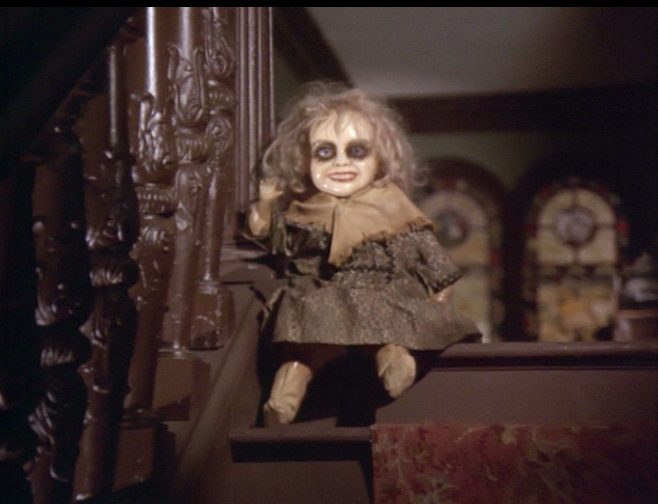
In the classic Killer Doll motif, this installment puts a darker, more layered spin on things. A British Colonel finds himself stalked by a beyond creepy doll. It shows up by mail as a gift for his niece. He was recently station in India, and the doll came from an Indian address, but no name for the sender. His niece and the doll are inseparable. He tries to get her another, but the replacement is soon found torn to pieces with the old doll smirking nearby. The doll ends up being a means to a sinister end.
“The Boy Who Predicted Earthquakes” (Season 2 Episode 1)
Writer: Rod Serling and based on a short story by Margaret St. Clair
Director: John Badham
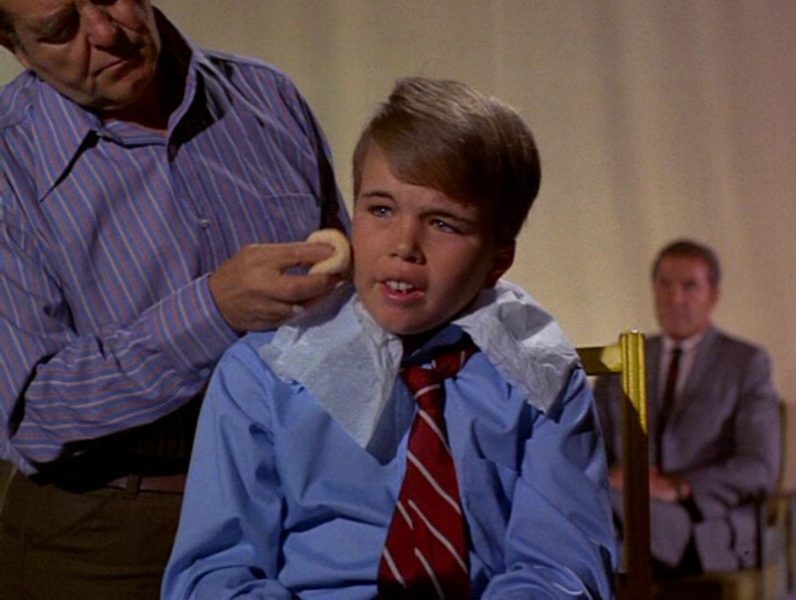
Clint Howard is a cinematic treasure. It’s always nice to see him pop up in anything from the 1960s to the present day. He may be a lot younger in this episode, but his face is unmistakable. He plays a young boy with the ability to predict the future. A local TV station reaps the rewards of his talents by broadcasting his predictions. His grandfather is his guardian and is careful to keep him from being exploited. When one prediction seems to good to be true, it just may be.
“Since Aunt Ada Came to Stay” (Season 2 Episode 3)
Writer: Alvin Sapinsley and based on a short story by A.E. von Vogt
Directer: William Hale

This one still terrifies me. A college professor suspects that his wife’s elderly aunt is actually a witch intent on possessing her. The aunt is absolutely terrifying, and James Farentino, who plays the professor, is constantly on edge while trying to protect his wife from a threat that only he takes seriously. It is unsettling the whole way through.
“Death on a Barge” (Season 3 Episode 12)
Writer: Halsted Welles and based on a short story by Everil Worrell
Director: Leonard Nimoy
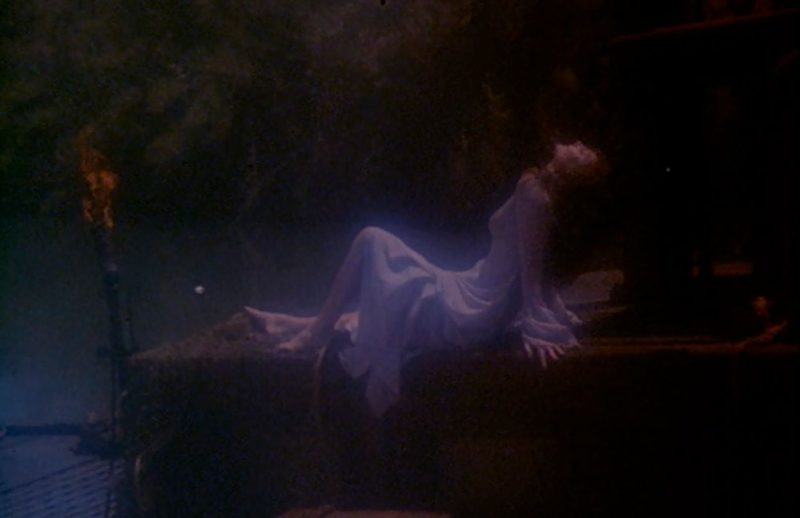
In Leonard Nimoy’s directorial debut, a local boy is infatuated with a mysterious girl named Hyacinth. She is confined to a floating barge and fears crossing the running water around it. Anyone familiar with basic monster folklore can figure out why.
Although Night Gallery doesn’t have the longevity of The Twilight Zone, the series gave Serling a vehicle to show what he could with darker subject matter. Some stories have science fiction elements, but most are horror. The caliber of acting is high, and the period pieces echoe classic Hammer films. Guest stars included: Sally Field, Vincent Price, John Astin, Geraldine Page, Sandra Dee, and many more. Also, look for a young director named Steven Spielberg in a few of the credits. As of this writing, Comet is showing Night Gallery grouped together with the Gary Collins paranormal investigator series, The Sixth Sense.
 PopHorror Let's Get Scared
PopHorror Let's Get Scared
